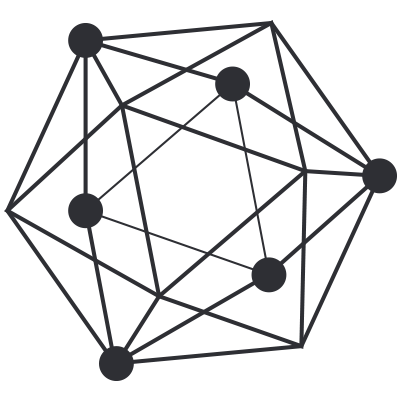Hyperledger, a collaborative cross-industry effort created to advance blockchain technology, has announced the general availability of Hyperledger Fabric 1.0. Hosted by The Linux Foundation, Hyperledger Fabric is a blockchain framework implementation and is intended as a foundation for developing blockchain applications, products or solutions.
Brian Behlendorf, Executive Director at Hyperledger, remarked: “Hyperledger Fabric 1.0 is a true milestone for our community. After over a year of public collaboration, testing, and validation in the form of POCs and pilots, consumers and vendors of technology based on Hyperledger Fabric can now advance to production deployment and operations. I look forward to seeing even more products and services being powered by Hyperledger Fabric in the next year and beyond.”
Hyperledger Fabric offers a modular architecture, allowing components such as consensus and membership services to be plug-and-play. It leverages container technology to host smart contracts called ‘chaincode’ that comprise the application logic of the system. Last year, Hyperledger Fabric became the first of the eight Hyperledger projects to be incubated. It was also the first of the Hyperledger projects to exit incubation to ‘Active’ status in March, after a year in incubation.
The efforts around Hyperledger Fabric have grown into a huge collaboration which includes engineers from: Arxan, Cloudsoft, CLS, d20 Technical Services, The Depository Trust & Clearing Corporation (DTCC), Digital Asset, Fujitsu, GE, Gemalto, HACERA, Hitachi, Huawei Technologies, Hyperchain, ImpactChoice, IT People, Knoldus, The Linux Foundation, Netease, Passkit, State Street Bank, SecureKey, IBM, SAP, Thoughtworks and Wanda Group. There have also been contributions from 35 unaffiliated individuals. In total, 159 developers have contributed to Hyperledger Fabric.
Jonathan Levi, Founder of HACERA, Hyperledger Fabric maintainer and a co-release manager of Hyperledger Fabric 1.0, stated: “Long before I was nominated as co-release manager of Hyperledger Fabric 1.0 or even as a maintainer, we at HACERA, felt we should share our blockchain, crypto and financial markets expertise to contribute to such a promising open-source project. Even though we have worked with Bitcoin’s blockchain and Ethereum since the early days, enterprises are very different. Different industries have different regulatory requirements and business needs. It was a privilege to manage a release built by 28 companies who allocated over 150 engineers; we have learned so much from each other. This has motivated us, at HACERA, to build HACERA Kore - a framework allowing participants and organizations to seamlessly secure and protect sensitive data and information on blockchains. I am confident these technologies will enable more enterprises to unlock the potential of blockchains, even in highly regulated markets.”
Managing Director and Chief Technology Architect at DTCC, Rob Palatnick remarked: “As a member of the Hyperledger community, DTCC is a strong advocate of open source software. The Hyperledger Fabric 1.0 release marks a significant milestone in the evolution of enterprise DLT technology and represents another step forward in making DLT adoption across critical sectors a reality.”
Tom Zschach, Chief Information Officer at CLS, explained: “Hyperledger Fabric is a foundational component of CLSNet - a service we are developing for bilateral payment netting of FX trades. We are very pleased with our collaboration with IBM and the tremendous progress over the past year in developing Hyperledger Fabric to meet the requirements of the wider financial industry. The high standards, attention to quality and rigor with which this open source project has been governed gives us the confidence in Hyperledger Fabric as a DLT platform for large-scale enterprise use cases.”
Co-founder and CEO, IntellectEU Inc., Hanna Zubko commented: “The Hyperledger Fabric 1.0 release is a major step towards production-ready DLT Blockchain implementations, heavily demanded by our customers and partners. IntellectEU has built proofs of concept with Hyperledger Fabric for document management and authentication, KYC/identity management, supply chain transparency and provenance tracking, smart correspondent banking and central bank use cases. The Hyperledger Fabric 1.0 release gives us the opportunity to move the projects towards pilot and eventually production implementations. I would like to acknowledge the entire Hyperledger development community and Hyperledger TSC who worked tirelessly to make this a reality.”
Nigel Dobson, GM Wholesale Digital, Digital Banking, ANZ Banking Group Limited, noted: “As a founding member of the Hyperledger community, ANZ is excited to be using Hyperledger Fabric 1.0 in its latest customer PoC, which has enabled the digitisation of the bank guarantee (or SBLC as they are known in the US) for property companies in Australia. The emergence of Fabric 1.0 has allowed ANZ to build a sophisticated multi-party solution for digitising, securing and managing these otherwise paper documents and to solve a range of legacy problems for our customers, both tenant and landlord. Version 1.0 brings the technology a step closer towards the flexible, scalable and secure DLT fabric needed by a broad range of industry grade use cases, and a step closer towards mainstream adoption.”
CTO at IT People Corporation, Mohan Venkataraman said: “After building solutions on both Ethereum and Hyperledger Fabric 1.0, we found Fabric to be the superior platform for enterprise-grade blockchain applications. Since Hyperledger Fabric was designed to meet key requirements for permissioned blockchains with transaction privacy and configurable policies, we’ve been able to build solutions quickly and flexibly. Hyperledger Fabric lets our team spend more time focusing on our clients’ business requirements and less on finding technical workarounds.” -
Eric Vaughn, Co-founder and CTO at BlocLedger, stated: “We view Hyperledger Fabric as the ideal platform for integrating the benefits of blockchain with existing enterprise software solutions. As an early adopter of Hyperledger Fabric, we witnessed the open-source/open-governance software development from the early days of version 0.6 to the recent version 1.0 release candidate. We are impressed by the completeness and sophistication of the architecture and believe it will be the fundamental platform for large scale blockchain deployment in the enterprise.”













